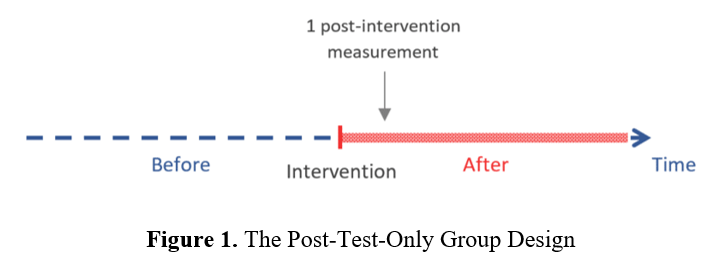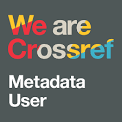Influence of the Instagram-Assisted Flipped Classroom Learning Model on Students' Mathematical Communication at Middle School
DOI:
https://doi.org/10.51574/ijrer.v4i3.3167Keywords:
Flipped Classroom, Instagram-Assisted, Learning Model, Mathematical Communication, Middle SchoolAbstract
It is important for schools to improve students' mathematical communication. However, a preliminary study at Public Middle School 1 Bulango Selatan revealed that some students still struggle to solve problems given by the teacher, particularly those related to determining the length of a side of a flat shape, especially in the context of congruence and similarity. Therefore, the intent of this study was to determine the effect of the flipped classroom learning model assisted by Instagram on students' mathematical communication at Public Middle School 1 Bulango Selatan. The method used in this study was an experimental method consisting of an experimental class and a control class with a research design used, namely a post-test-only group design. We conducted a t-test data analysis on both the experimental and control classes. The findings of the study showed that the t-count was greater than the t-table value; specifically, the t-count was 2.083, which is greater than 2.042, leading to the rejection of H0. Thereby, it can be concluded that learning using the flipped classroom learning model on the material of congruence and similarity of flat shapes can affect students' mathematical communication skills.
References
Akçayır, G., & Akçayır, M. (2018). The flipped classroom: A review of its advantages and challenges. Computers & Education, 126, 334-345. https://doi.org/10.1016/j.compedu.2018.07.021
Aminah, S., Wijaya, T. T., & Yuspriyati, D. (2018). Analisis kemampuan komunikasi matematis siswa kelas viii pada materi himpunan. Jurnal Cendekia: Jurnal Pendidikan Matematika, 2(1), 15-22.
Andujar, A., & Çakmak, F. (2020). Foreign language learning through instagram: a flipped learning approach. In New technological applications for foreign and second language learning and teaching (pp. 135-156). IGI Global. https://doi.org/10.4018/978-1-7998-2591-3.ch007
Anggo, M., & Samparadja, H. (2022). Profil Kemampuan Komunikasi Matematis Mahasiswa Dalam Pembelajaran Desain Blended Learning Tipe Flipped Classroom. Jurnal Pendidikan Matematika, 13(2), 228-241. https://doi.org/10.36709/jpm.v13i2.7
Ardila, A., Marzal, J., & Siburian, J. (2021). The Pengembangan Perangkat Pembelajaran Trigonometri Model Flipped Classroom untuk Meningkatkan Kemampuan Komunikasi Matematis Siswa. Edumatica: Jurnal Pendidikan Matematika, 11(3), 65-77. https://doi.org/10.22437/edumatica.v11i03.14497
Ata Baran, A., & Kabael, T. (2021). An investigation of eighth grade students’ mathematical communication competency and affective characteristics. The Journal of Educational Research, 114(4), 367–380. https://doi.org/10.1080/00220671.2021.1948382
Ata Baran, A., & Kabael, T. (2023). An investigation of eighth-graders’ mathematical communication competency and mathematical literacy performance. The Journal of Educational Research, 116(4), 216–229. https://doi.org/10.1080/00220671.2023.2250752
Awidi, I. T., & Paynter, M. (2019). The impact of a flipped classroom approach on student learning experience. Computers & education, 128, 269-283. https://doi.org/10.1016/j.compedu.2018.09.013
Bal Sarıaltın, N., & Ata Baran, A. (2025). A case study on the mathematical communication competency of mathematically gifted and non-gifted students. The Journal of Educational Research, 118(3), 299–309. https://doi.org/10.1080/00220671.2025.2475310
Cabı, E. (2018). The impact of the flipped classroom model on students' academic achievement. International review of research in open and distributed learning, 19(3). https://doi.org/10.19173/irrodl.v19i3.3482
Cevikbas, M., & Kaiser, G. (2020). Flipped classroom as a reform-oriented approach to teaching mathematics. Zdm, 52(7), 1291-1305. https://doi.org/10.1007/s11858-020-01191-5
Chen, K. S., Monrouxe, L., Lu, Y. H., Jenq, C. C., Chang, Y. J., Chang, Y. C., & Chai, P. Y. C. (2018). Academic outcomes of flipped classroom learning: a meta‐analysis. Medical education, 52(9), 910-924. https://doi.org/10.1111/medu.13616
Diego-Mantecon, J. M., Prodromou, T., Lavicza, Z., Blanco, T. F., & Ortiz-Laso, Z. (2021). An attempt to evaluate STEAM project-based instruction from a school mathematics perspective. ZDM–Mathematics Education, 53(5), 1137-1148. https://doi.org/10.1007/s11858-021-01303-9
Engelbrecht, J., Llinares, S., & Borba, M. C. (2020). Transformation of the mathematics classroom with the internet. Zdm, 52(5), 825-841. https://doi.org/10.1007/s11858-020-01176-4
Fauzan, M., Haryadi, H., & Haryati, N. (2021). Penerapan Elaborasi Model Flipped Classroom dan Media Google classroom Sebagai Solusi Pembelajaran Bahasa Indonesia Abad 21. DWIJA CENDEKIA: Jurnal Riset Pedagogik, 5(2), 361-371. https://doi.org/10.20961/jdc.v5i2.55779
Fernández-Martín, F. D., Romero-Rodríguez, J. M., Gómez-García, G., & Ramos Navas-Parejo, M. (2020). Impact of the flipped classroom method in the mathematical area: A systematic review. Mathematics, 8(12), 2162. https://doi.org/10.3390/math8122162
Godino, J. D., Burgos, M., & Gea, M. M. (2022). Analysing theories of meaning in mathematics education from the onto-semiotic approach. International Journal of Mathematical Education in Science and Technology, 53(10), 2609-2636. https://doi.org/10.1080/0020739X.2021.1896042
Kallia, M., van Borkulo, S. P., Drijvers, P., Barendsen, E., & Tolboom, J. (2021). Characterising computational thinking in mathematics education: a literature-informed Delphi study. Research in Mathematics Education, 23(2), 159–187. https://doi.org/10.1080/14794802.2020.1852104
Khalid, L., Bucheerei, J., & Issah, M. (2021). Pre-service teachers’ perceptions of barriers to promoting critical thinking skills in the classroom. Sage Open, 11(3), 21582440211036094. https://doi.org/10.1177/21582440211036094
Kosko, K. W., & Gao, Y. (2017). Mathematical communication in state standards before the common core. Educational Policy, 31(3), 275-302. https://doi.org/10.1177/0895904815595723
Loizou, M., & Lee, K. (2020). A flipped classroom model for inquiry-based learning in primary education context. Research in Learning Technology, 28. https://doi.org/10.25304/rlt.v28.2287
Mingorance Estrada, Á. C., Granda Vera, J., Rojas Ruiz, G., & Alemany Arrebola, I. (2019). Flipped classroom to improve university student centered learning and academic performance. Social Sciences, 8(11), 315. https://doi.org/10.3390/socsci8110315
Morgan, C. (2016). Communicating mathematically. In Learning to teach mathematics in the secondary school (pp. 148-163). Routledge. https://doi.org/10.4324/9781315672175-8
Mukhayat, A., Noer, S. H., & Sutiarso, S. (2024). Kemampuan komunikasi dan pemahaman konsep matematika melalui model Flipped Classroom berbantu media pembelajaran. Indiktika: Jurnal Inovasi Pendidikan Matematika, 6(2), 162-172. https://doi.org/10.31851/indiktika.v6i2.15034
Njie-Carr, V. P., Ludeman, E., Lee, M. C., Dordunoo, D., Trocky, N. M., & Jenkins, L. S. (2017). An integrative review of flipped classroom teaching models in nursing education. Journal of Professional Nursing, 33(2), 133-144. https://doi.org/10.1016/j.profnurs.2016.07.001
Nufus, H., & Mursalin, M. (2020). Improving Students' Problem Solving Ability and Mathematical Communication through the Application of Problem Based Learning. Electronic Journal of Education, Social Economics and Technology, 1(1), 43-48. https://doi.org/10.33122/ejeset.v1i1.8
Nuraida, I., & Amam, A. (2019). Hypothetical learning trajectory in realistic mathematics education to improve the mathematical communication of junior high school students. Infinity Journal, 8(2), 247-258. https://doi.org/10.22460/infinity.v8i2.p247-258
Popovic, G., & Lederman, J. S. (2015). Implications of informal education experiences for mathematics teachers' ability to make connections beyond formal classroom. School Science and Mathematics, 115(3), 129-140. https://doi.org/10.1111/ssm.12114
Rahman, R. A., Yusof, Y. M., Kashefi, H., & Baharun, S. (2012). Developing mathematical communication skills of engineering students. Procedia-Social and Behavioral Sciences, 46, 5541-5547. https://doi.org/10.1016/j.sbspro.2012.06.472
Rahmawati, R. D., Dwiningrum, S. I. A., & Fredy, F. (2022). Determinants of Self Efficacy in Mathematical Communication Elementary School Students. AL-ISHLAH: Jurnal Pendidikan, 14(3), 3693-3704. https://doi.org/10.35445/alishlah.v14i3.1827
Rahmi, S., Nadia, R., Hasibah, B., & Hidayat, W. (2017). The relation between self-efficacy toward math with the math communication competence. Infinity Journal, 6(2), 177-182. https://doi.org/10.22460/infinity.v6i2.p177-182
Rasyid, M. A. (2019). Kemampuan komunikasi matematis dalam pembelajaran matematika. Jurnal Edukasi: Kajian Ilmu Pendidikan, 5(1), 77-86. https://doi.org/10.51836/je.v5i1.116
Reidsema, C., Hadgraft, R., & Kavanagh, L. (2017). Introduction to the flipped classroom. The flipped classroom: Practice and practices in higher education, 3-14. https://doi.org/10.1007/978-981-10-3413-8_1
Richter, E., Carpenter, J. P., Meyer, A., & Richter, D. (2022). Instagram as a platform for teacher collaboration and digital social support. Computers & Education, 190, 104624. https://doi.org/10.1016/j.compedu.2022.104624
Ristiana, M. G., Wahyudin, W., Herman, T., & Nurjanah, N. (2025). Analysis of mathematical communication ability on prospective elementary school teachers based on self-regulated learning level. Infinity Journal, 14(3), 607-632. https://doi.org/10.22460/infinity.v14i3.p607-632
Rohid, N., & Rusmawati, R. D. (2019). Students' Mathematical Communication Skills (MCS) in Solving Mathematics Problems: A Case in Indonesian Context. Anatolian Journal of Education, 4(2), 19-30.
Ruswanto, R., Dwijanto, D., & Widowati, W. (2018). A realistic mathematics education model includes characteristic to improve the skill of communication mathematic. Unnes Journal of Mathematics Education Research, 7(1), 94-101. https://journal.unnes.ac.id/sju/ujmer/article/view/24068
Sein-Echaluce, M. L., Fidalgo-Blanco, Á., Balbín, A. M., & García-Peñalvo, F. J. (2024). Flipped Learning 4.0. An extended flipped classroom model with Education 4.0 and organisational learning processes. Universal access in the information society, 23(3), 1001-1013. https://doi.org/10.1007/s10209-022-00945-0
Serra, J. (2023). Mathematical morphology. In Encyclopedia of mathematical geosciences (pp. 820-835). Cham: Springer International Publishing.
Shyr, W. J., & Chen, C. H. (2018). Designing a technology‐enhanced flipped learning system to facilitate students' self‐regulation and performance. Journal of Computer assisted learning, 34(1), 53-62. https://doi.org/10.1111/jcal.12213
Simon, M. A. (2017). Explicating mathematical concept and mathematicalconception as theoretical constructs for mathematics education research. Educational Studies in Mathematics, 94, 117-137. https://doi.org/10.1007/s10649-016-9728-1
Teledahl, A. (2017). How young students communicate their mathematical problem solving in writing. International journal of mathematical education in science and technology, 48(4), 555-572. https://doi.org/10.1080/10986060802291642
Tinungki, G. M., Hartono, P. G., Nurwahyu, B., Islamiyati, A., Robiyanto, R., Hartono, A. B., & Raya, M. Y. (2024). Exploring the team-assisted individualization cooperative learning to enhance mathematical problem solving, communication and self-proficiency in teaching non-parametric statistics. Cogent Education, 11(1). https://doi.org/10.1080/2331186X.2024.2381333
Tong, D. H., Uyen, B. P., & Quoc, N. V. A. (2021). The improvement of 10th students' mathematical communication skills through learning ellipse topics. Heliyon, 7(11). https://doi.org/10.1016/j.heliyon.2021.e08282
Vos, P. (2018). “How real people really need mathematics in the real world”—Authenticity in mathematics education. Education Sciences, 8(4), 195. https://doi.org/10.3390/educsci8040195
Wang, Y., Huang, X., Schunn, C. D., Zou, Y., & Ai, W. (2019). Redesigning flipped classrooms: a learning model and its effects on student perceptions. Higher Education, 78, 711-728. https://doi.org/10.1007/s10734-019-00366-8
Widjajanti, D. B. (2013). The communication skills and mathematical connections of prospective mathematics teacher: A case study on mathematics education students, Yogyakarta State University, Indonesia. Jurnal Teknologi (Sciences & Engineering), 63(2). https://doi.org/10.11113/jt.v63.2003
Yaniawati, R. P., Indrawan, R., & Setiawan, G. (2019). Core Model on Improving Mathematical Communication and Connection, Analysis of Students' Mathematical Disposition. International Journal of Instruction, 12(4), 639-654.

Downloads
Published
How to Cite
Issue
Section
License
Copyright (c) 2025 Dian Saferlin, Syamsu Qamar Badu, Perry Zakaria, Putri Ekawati Kobandaha

This work is licensed under a Creative Commons Attribution-ShareAlike 4.0 International License.









1.png)













